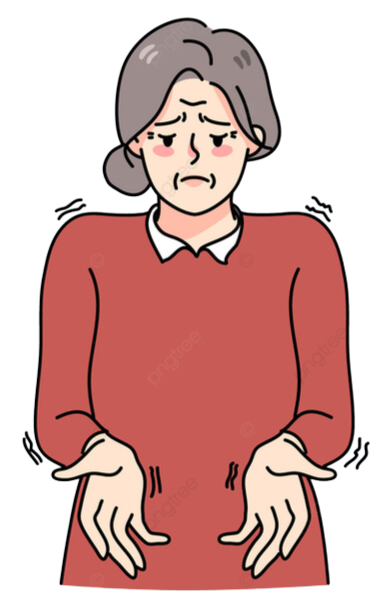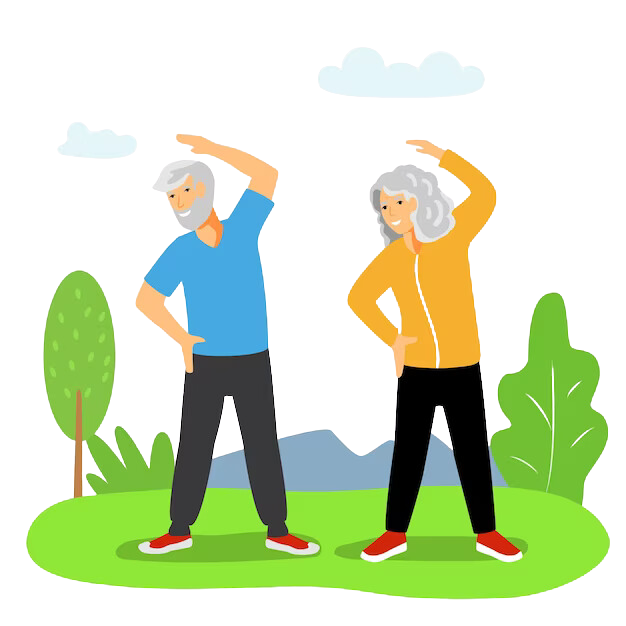Parkinson's Disease
- jessicaaqian
- Nov 12, 2024
- 6 min read
Updated: Apr 17
A Guide to Parkinson's Disease
What is Parkinson's Disease?
Parkinson’s disease is the second most common neurodegenerative disease, following Alzheimer’s disease. It is a nervous system disorder that negatively impacts one’s movement. Individuals who are diagnosed with Parkinson’s may experience issues with movement, stiffness, and uncontrollable tremors. Parkinson’s cannot be cured, but its symptoms can be controlled by medication or minor surgery.
In Singapore, 32 in every 100,000 individuals above the age of 50 are diagnosed with Parkinson’s disease. With the increase in ageing population and the increase in life expectancy, it is extrapolated that there would be an increase in prevalence of Parkinson’s within the next 10 years.
Warning Signs
Early symptoms for Parkinson’s disease can be mild and are usually unnoticeable. The list below suggests a few warning signs that may point to symptoms of Parkinson’s. It is important to note that having these signs does not mean one has the condition but it is important to seek medical advice.
Tremors

This is the most common symptom of Parkinson’s. This refers to the trembling or shaking of the limbs while at rest. For instance, one might experience uncontrolled trembling in one of his limbs when sitting down.
Limb Stiffness
This is also referred to as the symptom where an individual starts to feel stiffness in the body and has slower movement throughout the day. Individuals with Parkinson’s might experience twitching motions and the feeling of lacking coordination in their movements.
Vocal Changes
Speaking involves the movement of the muscles as well. As Parkinson’s affects one’s movement, it also affects how one speaks. Individuals with Parkinson’s might speak in a slurred manner. Less dramatic changes in voice can also be observed in early stages of the disease.
Posture
Inability to stand straight or signs of slouching possibly caused by faintness or dizziness can be warning signs of Parkinson’s. As individuals with Parkinson’s have difficulty with body coordination and balance, they might start to lean towards one side of the body and slouch.
Changes in Hand-Writing
As individuals experience more tremor and limb stiffness, they may start to find it challenging to write in their usual handwriting and their writings might appear to be smaller. Aside from smaller and different handwriting, these writings might also appear to be more closely spaced. These changes in handwriting are usually uncontrollable.
Stages of Parkinson's Disease
The severity of Parkinson’s disease is broken down into five stages and differs in the intensity and the number of symptoms experienced by the diagnosed individual.
Stage 1
Symptoms at this stage can be too mild to be noticeable, and individuals may not think of seeking medical consultation. Even for those who seek consultation, doctors may not be able to make a diagnosis due to how mild the symptoms are.
Symptoms experienced in stage 1 usually do not interfere with daily functioning, only minor tremor or delayed movements on one side of the body can be observed.
Stage 2
Individuals enter stage 2 when they experience symptoms on both sides of the body. Individuals in stage 2 might start to experience walking difficulty, changes in posture and slower movement in daily activities. Stage 2 does not interfere with one’s daily functioning, however, they might experience some difficulties in completing complicated tasks and take a longer time to complete familiar movement tasks.
Stage 3
This is considered as the middle stage of Parkinson's, where doctors point out that it marks the major turning point in the severity of the disease. Main changes in the symptoms include loss of balance and slowing down of movements. Individuals in this stage are unable to balance themselves and make rapid adjustments in movement to break their falls. While individuals can be fully independent, they might experience impairment in basic physical activities.
Stage 4
Individuals at this stage are mostly dependent on their caregivers. It might still be possible to stand without support, but they may require assistance to move around. Individuals at this stage are unable to independently complete daily activities and maintain daily functioning without the support of the caregiver. It is highly recommended that individuals at stage 4 do not live alone as it can be dangerous.
Stage 5
This is the most severe stage of Parkinson’s disease. Individuals might not be able to walk or stand even with the support of a walker. Most individuals at this stage are usually on bed rest and require a wheelchair. It is highly recommended for them to have around-the-clock care to prevent any life-threatening accidents. Psychological symptoms such as hallucination and delusions might occur at this stage as well.
Depression and Parkinson's
Studies have suggested a correlation between one’s Parkinson’s symptoms and psychological impact. The most common psychological comorbidity is depression.
This depression is differentiated from grief and is developed throughout the course of the disease.
Depression in individuals with Parkinson’s disease can be caused by several risk factors, which will be explained below:
Negative Thoughts
Individuals with Parkinson’s disease may feel grief at the moment of diagnosis. The understanding that they will lose their mobility and independence might cause the individual to develop a negative attitude about living the rest of the life with Parkinson’s disease. This might lead to helplessness and hopelessness.
Social Isolation
As the lifestyle of individuals with Parkinson’s become more restrictive due to the lack of mobility, they may experience social isolation. This can cause loneliness and thus, increase the risk of depression.
While Parkinson's Disease cannot be cured, its progression can be slowed down through adjustment of lifestyle.
Diet
Diet plays an important role in the prevention of Parkinson’s disease. Omega-3 fatty acids are important towards the prevention of neurodegenerative diseases as these acids prevent the cells from degenerating. Moreover, researchers suggested that the consumption of organic ingredients can prevent Parkinson’s disease as there are higher levels of pesticides or herbicides in the brains of individuals with Parkinson’s disease.
Regular Exercise

Individuals who engage in recreational activities of moderate intensity are often at a lower risk of being diagnosed with Parkinson’s disease. Individuals in the early stages of Parkinson’s disease can also engage in routine exercises to slow down the progression of symptoms. Engaging in regular exercise can maintain one’s mobility so that individuals in the early stages of the disease can continue to perform everyday activities with ease and prevent quick progression into more severe stages.
Providing Caregiver Support
Support from family members is essential for individuals with Parkinson's. Most family members are also caregivers of diagnosed individuals.
When caregivers experience high levels of stress, not only is their well-being affected, the quality of caregiving for diagnosed individuals is also compromised. As such, it is essential to manage caregiver stress. Below are some tips for family members who take on the caregiver role:
1. Remember to engage in self-care
When taking care of an individual they care deeply for, it is common for caregivers to neglect their own well-being and stop participating in activities that they used to enjoy. However, withdrawing from these activities that relax and recharge the caregiver can result in caregiver fatigue which can negatively impact the quality of care provided to the receiver.
2. Be mindful of own limits
While providing extended care for individuals, it is common for caregivers to forget to check in with their own emotions and levels of comfort. It is important for caregivers to check in with themselves throughout the day to gauge if there is a need for them to rest or seek assistance from others. Reflecting on what one’s triggers and limits are can help to minimise and mitigate burnout while caregiving.
3. Assign More Than 1 Caregiver
If possible, involve a few family members in the process of caregiving. This can be done through creating a rotation schedule where family members take turns to care for the individual with Parkinson’s. This allows the main caregiver to take time off to relax and also widens the social network of the individual with Parkinson’s. Lastly doing so can also bring the family together as everyone is putting in effort and working together to provide care for the individual.
Providing Caregiver Support
Even with self-care and having a rotational care schedule, being a caregiver can still be overwhelming when over an extended period of time. Thus, social support for the caregiver is also essential especially when the individual with Parkinson’s progresses into a more severe stage of the disease. If caregivers require more social support, they can:
1. Reach out to informal support circle
This involves friends or another family members. Talking and sharing emotions with a third party can help the caregiver to ventilate and prevent them from externalising negative emotions towards individuals with Parkinson’s disease.
2. Joina support group
Support groups are platforms where caregivers can voice out any questions or any thoughts without feeling isolated. If a caregiver finds it difficult to speak to a friend or family member, he/she can consider joining a support group specially for caregivers for patients with Parkinson’s. There are a number of support groups that caregivers can join to mutually share and listen to experiences of other caregivers. Caregivers can approach the hospital and enquire on the support groups available.
3. Speak toamental health professional
If reaching out to informal support does not seem to help and a caregiver has thoughts of suicide/self-harm, it is crucial to reach out to formal support sources such as medical professionals and mental health professionals. These individuals are equipped with skills to assess for possible underlying mental health conditions that a caregiver may be experiencing.
Written and Edited by: Agnes Tan & Xavierlyn Tan | Designed by: Xavierlyn Tan








Comments